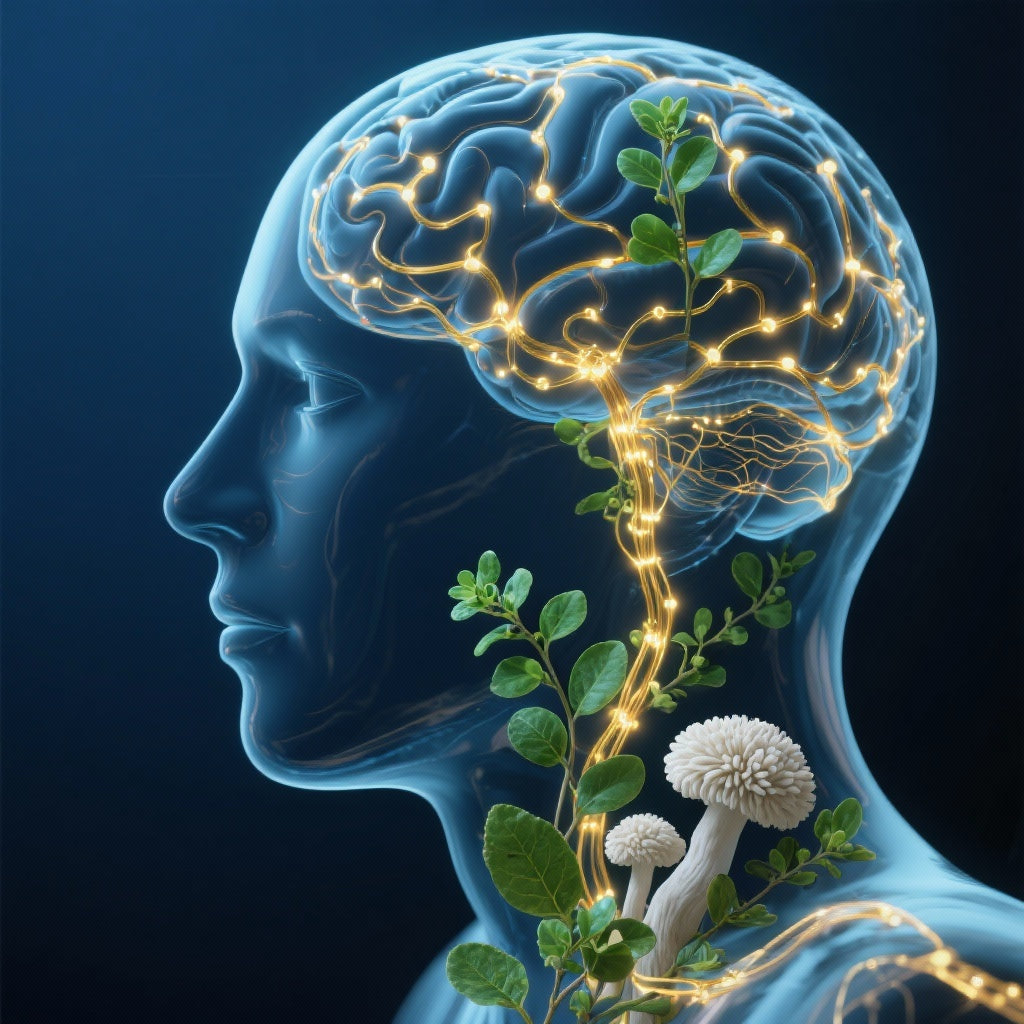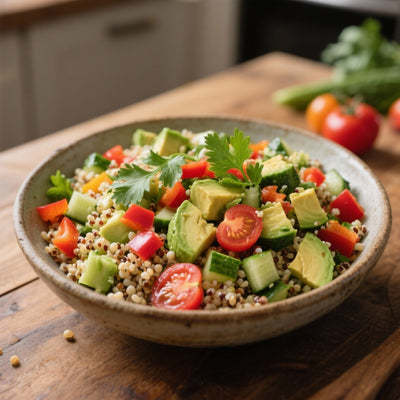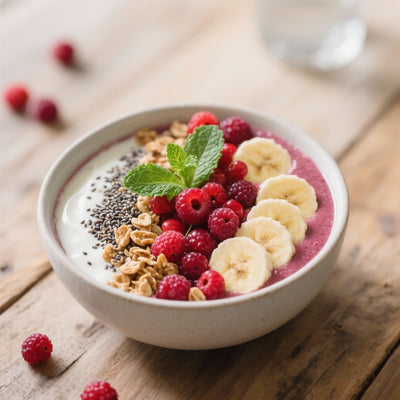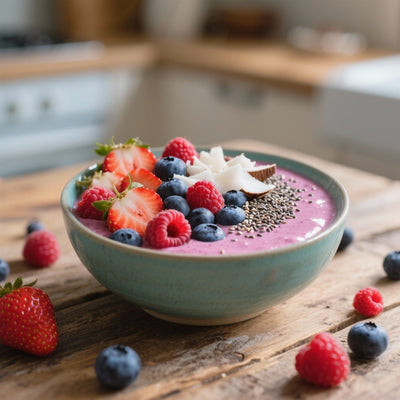What is neuroplasticity and how can it be stimulated with natural substances?
Imagine that your brain isn't a fixed structure, set in stone at birth, but a living, malleable sculpture that constantly reorganizes itself based on your thoughts, actions, and environment. This fascinating ability is neuroplasticity . For decades, the scientific dogma held that the adult brain was immutable. Today, we know that's false. This discovery is revolutionizing our approach to cognitive health, learning, and mental well-being.
Do you sometimes feel stuck in your thought patterns? Are you afraid that cognitive decline is inevitable? This article will prove you wrong. You will discover how to regain control over the very architecture of your mind. We will explore in depth what neuroplasticity is, why it is the key to your potential, and above all, how you can actively stimulate it through healthy lifestyle habits and the power of targeted natural substances.
Understanding Neuroplasticity: The Superpower of Your Brain
At the heart of all your thoughts, memories, and skills lies a network of nearly 86 billion neurons. Neuroplasticity, or brain plasticity, is the ability of this network to change and reorganize itself throughout your life. Every time you learn something new, have a significant experience, or change a habit, you are literally rewiring the neural connections in your brain.
"The brain is like a muscle. When you use it, it gets stronger. Neuroplasticity is the mechanism of this growth."
Think of it like a city's road network. Heavily traveled roads (your recurring habits and thoughts) become wide, efficient highways. Less-traveled paths can disappear, while new roads can be built to connect to new destinations (new skills or knowledge).
The Two Pillars of Cerebral Plasticity
Neuroplasticity manifests itself primarily in two ways:
- Structural plasticity: This is the brain's ability to change its physical structure. This happens when you learn. Synapses (the connections between neurons) can strengthen, weaken, or new ones can be created. This is the very foundation of long-term memory.
- Functional plasticity: This refers to the brain's ability to transfer functions from a damaged area to other healthy areas. This process allows people to recover some of their abilities after a stroke or traumatic brain injury.
Why is neuroplasticity so crucial?
Activating your neuroplasticity is not simply an intellectual exercise; it's a direct investment in your quality of life. Its benefits are numerous and affect all aspects of your existence:
- Learning and memory: This is the engine that allows you to acquire new skills, memorize information, and remain mentally agile.
- Mental and emotional resilience: By strengthening positive neural circuits, you can better manage stress, overcome trauma, and even reduce the symptoms of anxiety and depression.
- Preventing cognitive decline: A "plastic" brain is a more resilient brain. Stimulating neuroplasticity helps build a "cognitive reserve" that can delay the onset of neurodegenerative diseases.
- Performance improvement: Whether you are an athlete, artist or executive, an optimized brain means better focus, increased creativity and faster decision-making.
To learn more about the basics of cognitive health, feel free to check out our main information blog .
Beyond Substances: Lifestyle Habits for a Plastic Brain
Before even discussing specific nutrients, it's essential to understand that neuroplasticity is primarily activated by your daily actions. Natural substances act as catalysts and amplifiers, but they function best in a fertile environment. Here are the foundations to lay.
Continuous Learning: The Fuel of the Brain
Novelty and challenge are your brain's best friends. Stepping outside your comfort zone forces the creation of new neural connections. This can be as simple as taking a new route home, or as complex as learning a new language or playing a musical instrument. The idea is to break the routine and stimulate your mind in unexpected ways.
Physical Exercise: The Body at the Service of the Mind
Physical activity, particularly aerobic exercise (running, swimming, dancing), is one of the most powerful stimulants of neuroplasticity. It increases blood flow to the brain and, most importantly, stimulates the production of an essential protein: BDNF (Brain-Derived Neurotrophic Factor) . BDNF acts like fertilizer for your neurons, promoting their growth, survival, and the formation of new synapses.
Restorative Sleep and Meditation
It is during deep sleep that your brain consolidates the day's memories and learning, a fundamental process of structural plasticity. Poor quality sleep sabotages this work. Mindfulness meditation, for its part, has demonstrated its ability to physically alter the brain, thickening areas related to attention and emotional regulation, while reducing the size of the amygdala, the fear center.
Adopting a healthy lifestyle is the first step. For ideas on how to incorporate these practices, visit our lifestyle blog .
The Power of Plants and Nutrients to Boost Neuroplasticity
Once good habits are established, certain natural substances can act as true allies to accelerate and support neuroplasticity processes. They provide the building blocks, energy, and protection necessary for constructing a more resilient and efficient brain.
Omega-3 Fatty Acids: The Essential Building Blocks of the Brain
Your brain is composed of nearly 60% fat, and a significant portion of this fat is DHA (docosahexaenoic acid), a type of omega-3 fatty acid. DHA is a crucial structural component of your neurons' cell membranes. A fluid and healthy cell membrane is essential for efficient neuronal communication.
Sufficient intake of omega-3 fatty acids, particularly DHA, helps to:
- Improve the fluidity of neuronal membranes.
- Supporting BDNF production.
- Reducing brain inflammation, a factor that hinders plasticity.
Natural sources: Fatty fish (salmon, mackerel, sardines), algae oil (for vegetarians/vegans), flax and chia seeds (for ALA, a precursor).
For ideas for nutrient-rich meals, take a look at our recipe blog .
Bacopa Monnieri: The Plant of Ancestral Memory
Used for centuries in Ayurvedic medicine, Bacopa Monnieri is an adaptogenic plant renowned for its effects on cognition. Its active compounds, bacosides, act directly on neuroplasticity. They help repair damaged neurons and improve nerve impulse transmission by increasing the growth of dendrites, the "branches" of neurons that receive information.
Clinical studies have shown that Bacopa Monnieri supplementation can significantly improve information processing speed, learning ability, and memory consolidation in healthy adults.
It is an excellent choice for those looking to support their long-term learning capacity and strengthen their memory.
Ginkgo Biloba: The Fossil Tree for Cerebral Circulation
Ginkgo biloba is one of the oldest tree species in the world, and its leaves have been used to support brain health for millennia. Its primary mechanism of action is the improvement of blood flow, including microcirculation in the brain. Improved blood flow means an increased supply of oxygen and essential nutrients to neurons, creating an optimal environment for neuroplasticity.
In addition, Ginkgo is rich in antioxidants (flavonoids and terpenoids) which protect neurons against free radical damage, thus helping to preserve brain health in the long term.
Adaptogenic Mushrooms: Lion's Mane
The Lion's Mane mushroom (Hericium erinaceus) is becoming a superstar among natural nootropics. Its unique characteristic? It contains unique compounds, hericenones and erinacins, which have the ability to cross the blood-brain barrier and stimulate the synthesis of NGF (Nerve Growth Factor) . NGF is another protein, related to BDNF, which is absolutely vital for the maintenance, survival, and regeneration of neurons. By stimulating NGF, Lion's Mane directly supports the brain's structural plasticity.
Flavonoids: The Colors That Protect Your Neurons
Flavonoids are plant compounds that give fruits and vegetables their vibrant colors. Far from being mere pigments, they are powerful allies for the brain. Studies have shown that a diet rich in flavonoids is associated with better cognitive health and a slowing of age-related decline. They promote neuroplasticity by stimulating the production of BDNF and protecting neurons from oxidative stress.
Natural sources: Berries (blueberries, blackberries), green tea, dark chocolate (more than 70% cocoa), citrus fruits, and red wine (in moderation).
Your Brain, Your Masterpiece in the Making
Neuroplasticity isn't an abstract concept reserved for neuroscientists. It's a tangible and powerful force lying dormant within you, waiting to be activated. You now have the keys to understanding that your brain is dynamic and that you can actively participate in its evolution. By combining stimulating lifestyle habits—learning, exercise, sleep—with targeted support from natural substances like omega-3s, Bacopa Monnieri, or Lion's Mane, you're not just preserving your brain, you're sculpting it.
Don't wait to begin. Choose one small action today. Perhaps it's starting a daily walk, downloading a language learning app, or incorporating a quality supplement into your routine. Every step counts toward building a stronger, more agile, and more resilient brain for years to come. What habit or natural substance will you incorporate first to shape the masterpiece that is your mind?











